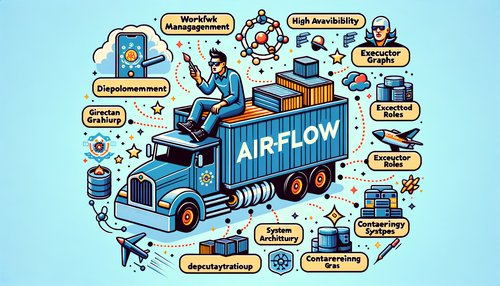Mastering the Wilderness: Your Ultimate Guide to Getting Started with Terraform
Welcome to the ultimate guide on getting started with Terraform. If you’re eager to manage your infrastructure more efficiently while embracing the coding principles, you’ve arrived at the right place. In this post, we'll break down the essentials of Terraform, guide you through the initial steps, and share some practical tips to enhance your journey.
What is Terraform and Why Should You Use It?
Terraform, an open-source infrastructure as code (IaC) tool developed by HashiCorp, allows you to define, provision, and manage your cloud infrastructure using declarative configuration files. This approach provides many advantages:
- Consistency: Ensure your infrastructure setup is consistent across multiple environments.
- Version Control: Track changes and revert to previous configurations if needed.
- Automation: Streamline the process of deploying and scaling your infrastructure.
Getting Started: Installation and Setup
Let’s dive into the first steps of setting up Terraform. Follow these instructions to get up and running:
- Install Terraform: Download the appropriate package for your operating system from the official Terraform website. Follow the installation instructions provided for your OS.
- Verify Installation: Open your terminal or command prompt and run
terraform --versionto verify the installation. - Set Up a Workspace: Create a directory for your Terraform project. This directory will hold your configuration files.
Understanding the Basics: Configuration Files
Terraform uses configuration files—in HCL (HashiCorp Configuration Language)—to define the infrastructure. Here's a basic example to create an AWS EC2 instance:
provider "aws" {
region = "us-west-2"
}
resource "aws_instance" "example" {
ami = "ami-0c55b159cbfafe1f0"
instance_type = "t2.micro"
}This configuration does the following:
- Specifies the AWS provider and its region.
- Defines a resource block to create an EC2 instance with a specified AMI and instance type.
Running and Managing Terraform: The Basics
Once your configuration files are ready, you can start managing your infrastructure. Here are the basic commands you'll use:
- Initialize: Run
terraform initin your project directory to initialize Terraform. This step downloads provider-specific plugins. - Plan: Use
terraform planto see what changes Terraform will make to your infrastructure based on your configuration files. - Apply: Run
terraform applyto execute the plan and make the changes. - Destroy: If needed, you can clean up your resources by running
terraform destroy.
Practical Tips for Terraform Beginners
To make the most out of Terraform, keep these practical tips in mind:
- Modularize Your Code: Break your infrastructure into reusable modules to keep your configuration files organized and manageable.
- State Management: Terraform uses state files to keep track of your infrastructure. Store these state files securely and consider using a remote backend for collaboration.
- Version Control: Keep your configuration files in a version control system like Git to track changes and collaborate with your team.
- Read the Documentation: Terraform’s official documentation is an invaluable resource. Refer to it often to understand the nuances of specific providers and resources.
Conclusion
Congratulations! You’ve taken your first steps into the wilderness of Terraform. We've covered what Terraform is, its benefits, the basics of configuration, and essential commands to manage your infrastructure. By following these guidelines and practical tips, you'll be well on your way to mastering infrastructure as code.
Ready to dive deeper? Start experimenting with different providers and resources, and adapt your configurations to suit your specific needs. Happy Terraforming!
Recent Posts

Unlocking the Power of Terraform: Mastering Conditional Expressions for Smarter Infrastructure Automation

Unveiling the Future: Navigating the Public Interface of Apache Airflow for Streamlined Workflow Management
Apache Airflow
Mastering Workflow Automation: Unconventional Apache Airflow How-To Guides for the Modern Data Enthusiast
Apache Airflow
Mastering the Cloud: Unveiling AWS CloudFormation Best Practices for Seamless Infrastructure Management

